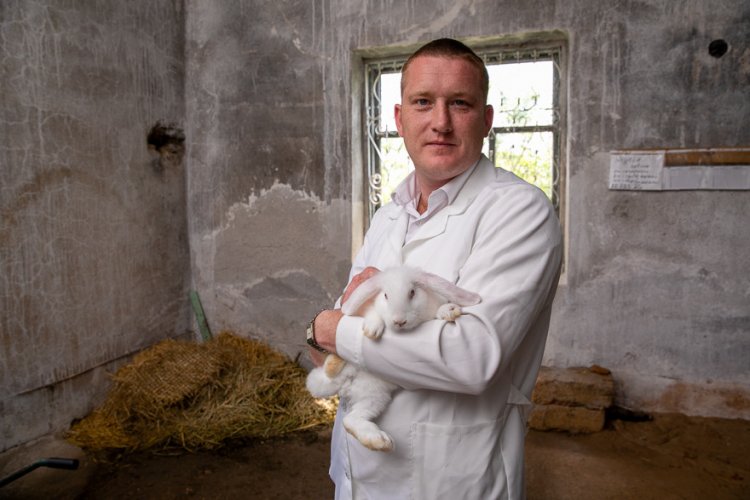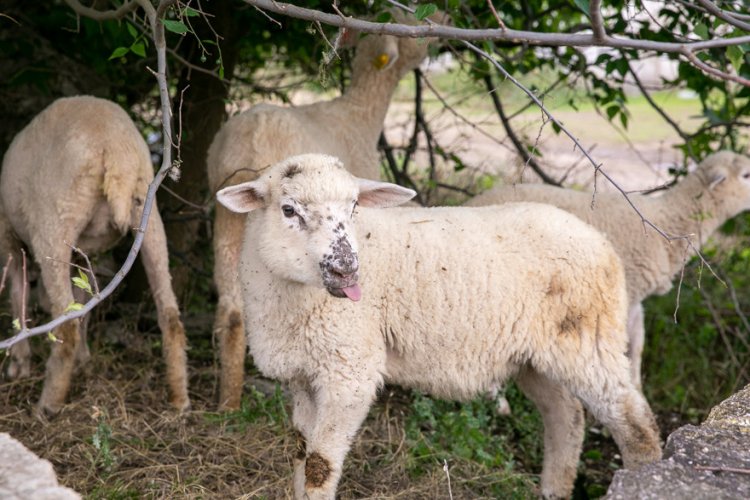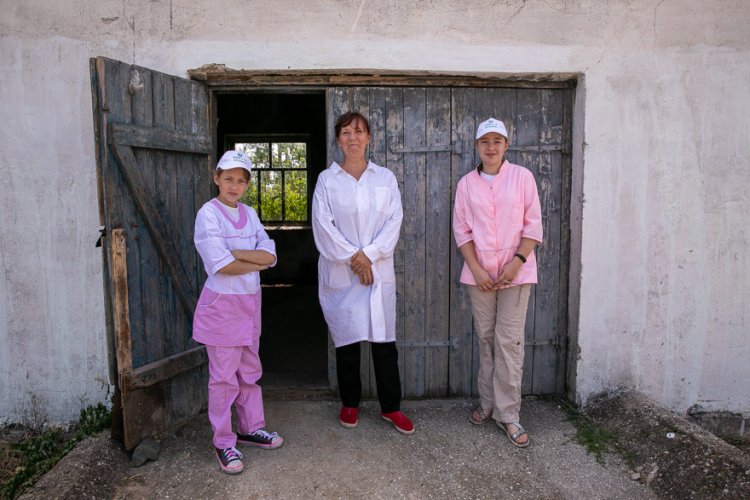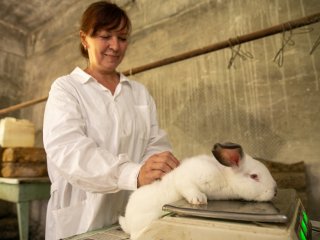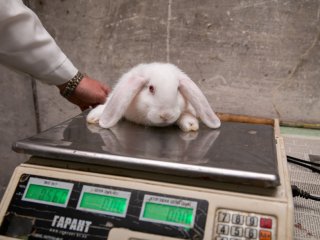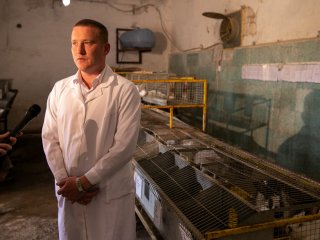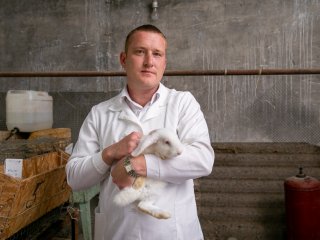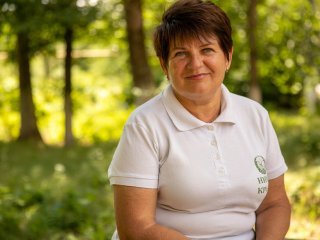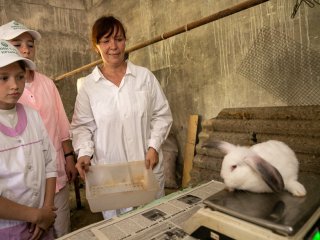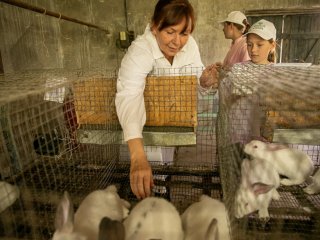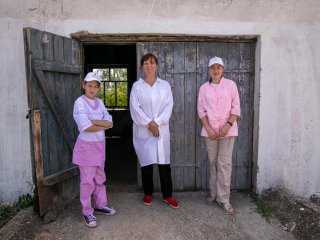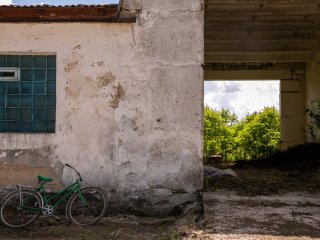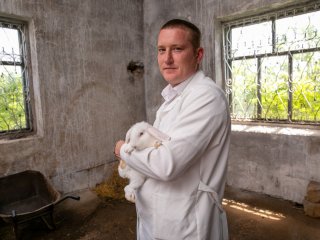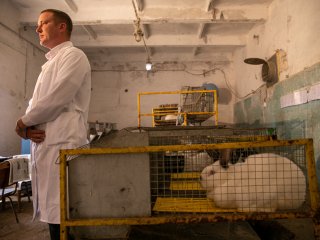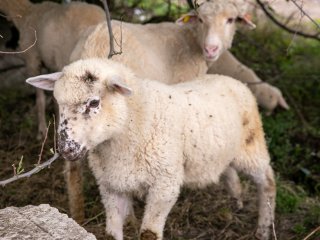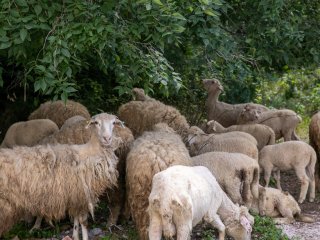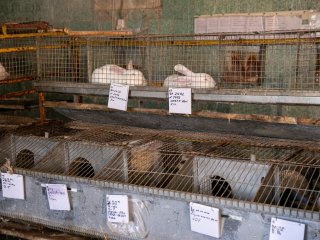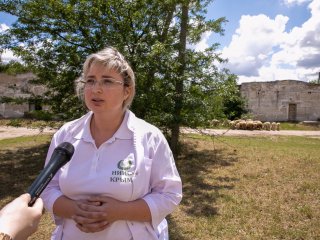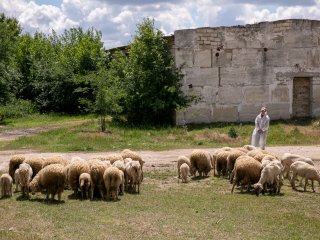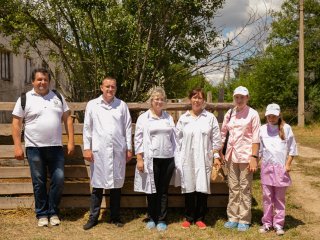On June 12, as part of the press tour to the Republic of Crimea, the Scientific Russia portal met the Animal Husbandry Department of the Agricultural Research Institute of Crimea to learn about their rabbit and sheep breeding projects. The researchers are working to ensure self-sufficiency of the Crimea as well as developing its scientific potential. The employees of the Animal Husbandry Department of the Agricultural Research Institute have chosen to work in areas that are effective in the natural landscape and climate of the peninsula: rabbit breeding, sheep breeding, and organic animal husbandry.
Denis Viktorovich Zubochenko, a research officer at the Animal Husbandry Department of the Agricultural Research Institute of Crimea
RABBITS ARE NOT JUST VALUABLE FUR...
Denis Viktorovich Zubochenko, a research officer at the Animal Husbandry Department of the Agricultural Research Institute of Crimea, spoke of the key areas in rabbit breeding: “In genetics, our work today is mostly about breeding hybrid meat rabbits and sheep, including improvement of production parameters of Tsigai sheep traditionally bred in Crimea. One of the main work areas is to make industrial rabbit breeding more profitable. Our main task is to promote rabbit breeding and create a basis to make it profitable. Our main area in genetic work is to create a new Crimean meat hybrid — a strategic task within import substitution.”
According to Denis Zubochenko, the rabbit breeding industry is mostly focused on hybrid breeds selected in France and Hungary, which may have an adverse effect on the industry in view of possible sanctions. Therefore, it is important to produce a Russian hybrid.
In addition, new rabbit keeping methods and techniques adapted for Crimea are being developed. “We have already patented a hay-free total mixed ration. Rabbits receive a ready-to-feed mixture that resembles granola and contains all necessary components. Production tests have been performed, with excellent results.” This fodder is much cheaper and healthier. Now, Crimean farmers can purchase balanced feed for their animals below the market price. Profit margins have reached 10%. Our colleagues – geneticists from the Microbiology Department, are helping the animal breeders develop this sector, by isolating the color and meat production genes.
What is equally important is that Crimean scientists have started using essential oil production waste to replace antibiotics and phytobiotics. And, of course, an important milestone in this area is zero waste operations. Specialists are processing rabbit dung using beneficial bacteria to produce a unique soil fertilizer. It is in high demand among local farmers.
Denis Viktorovich Zubochenko, a research officer at the Animal Husbandry Department of the Agricultural Research Institute of Crimea, on the key areas in rabbit breeding
ORGANICS EVERYWHERE
The close cooperation of all Departments makes the Agricultural Research Institute unique. For example, by-products of crop production are being tested on vivarium animals. Specialists are testing new feeds that have never been used in animal husbandry, but obviously have high potential. In organic animal husbandry, specialists of the Agricultural Research Institute of Crimea are investigating the plant-based phytobiotics, properties of crops as animal feed or supplements, and enriching the crops with microelements they lack.
Thus, the scientists successfully develop new animal diet recipes based on clean local crops with plant antioxidants, and make products that are free of hormones, pesticides and antibiotics.
PROGRESS OF CRIMEAN SHEEP BREEDING INDUSTRY
Sheep breeding is actively developing as well as rabbit breeding, also with the use of clean crops and latest breeding techniques. Specialists believe stall barn housing to be the main factor in the development of competitive sheep breeding in Crimea. To put it simply, the sheep stay in the same location throughout the year. Frequent summer droughts in Crimea make pasture land unusable. Specialists of the Agricultural Research Institute create sheep feed out of drought-resistant crops grown in the peninsula: esparcet, melilot, barley and wheat. There is a unique pelleted mixed feed going through the patenting stage, which has no rivals in the world. This feed type contains the necessary nutritious elements for sheep. The farmers do not need to rake their brains thinking where to find hay and how to prepare it. The mixed feed created by the Agricultural Research Institute of Crimea is completely ready-to-feed.
Lambs bred by crossing ewes of Crimean breed with foreign, fine-wool meat rams
At present, specialists are working on a new type of Crimean sheep, which will have excellent meat characteristics, premium class marbled meat in particular. There are new generation lambs already, as the basis for the unique Crimean type of sheep.
SCIENCE AND TECHNLOLOGY
The scientific component today is impossible without an equipment base. In 2019, a unique clinical diagnostic laboratory opened at the Agricultural Research Institute of Crimea, with capabilities comparable to those of Crimea’s leading veterinary labs. The lab has hematological, immunoassay and biochemical analyzers. The lab staff can determine blood structure in animals and fowl, and the level of various hormones. This gives a complete picture of the impact of various factors in research, and allows adjusting nutrition conditions.
Tatiana Alekseevna Kuyevda, junior research officer explained, “As a multidisciplinary research institute, we have the unique opportunity to not just grow clean products but to investigate them using some animal species in vivarium conditions, and use our products to make animal feed supplements. Our approach: best things – to people, crop production waste – to animals.”
Tatiana Alekseevna Kuyevda on comprehensive approach in research and production
YOUTH IS OUR EVERTHING
Scientists at the Agricultural Research Institute of Crimea also never forget about youth. Crimea is suffering from shortage of young trained workers more than any other Russian region, especially in rural areas. Crimea’s scientific community are trying to address this issue by engaging young people and encouraging them to go into science and agriculture at a very young age. The Agricultural Research Institute signs agreements for scientific project with a district school. School students take part in research with great interest, offering their own projects and winning prizes in regional competitions. The kids are going to represent Crimea in a national competition quite soon. The school students are learning farm animal care and the basics of scientific work. There are ongoing negotiations with Pribrezhnensky Agricultural College.
The Agricultural Research Institute of Crimea is cooperating with Krasnogvardeiskaya School No. 1
Through concerted effort, employees of the Agricultural Research Institute of Crimea are doing an important work – developing agriculture in Crimea and finding new resource saving techniques for crop production and animal husbandry.
This material was prepared with the support from the Ministry of Science and Higher Education and the Russian Academy of Sciences.
